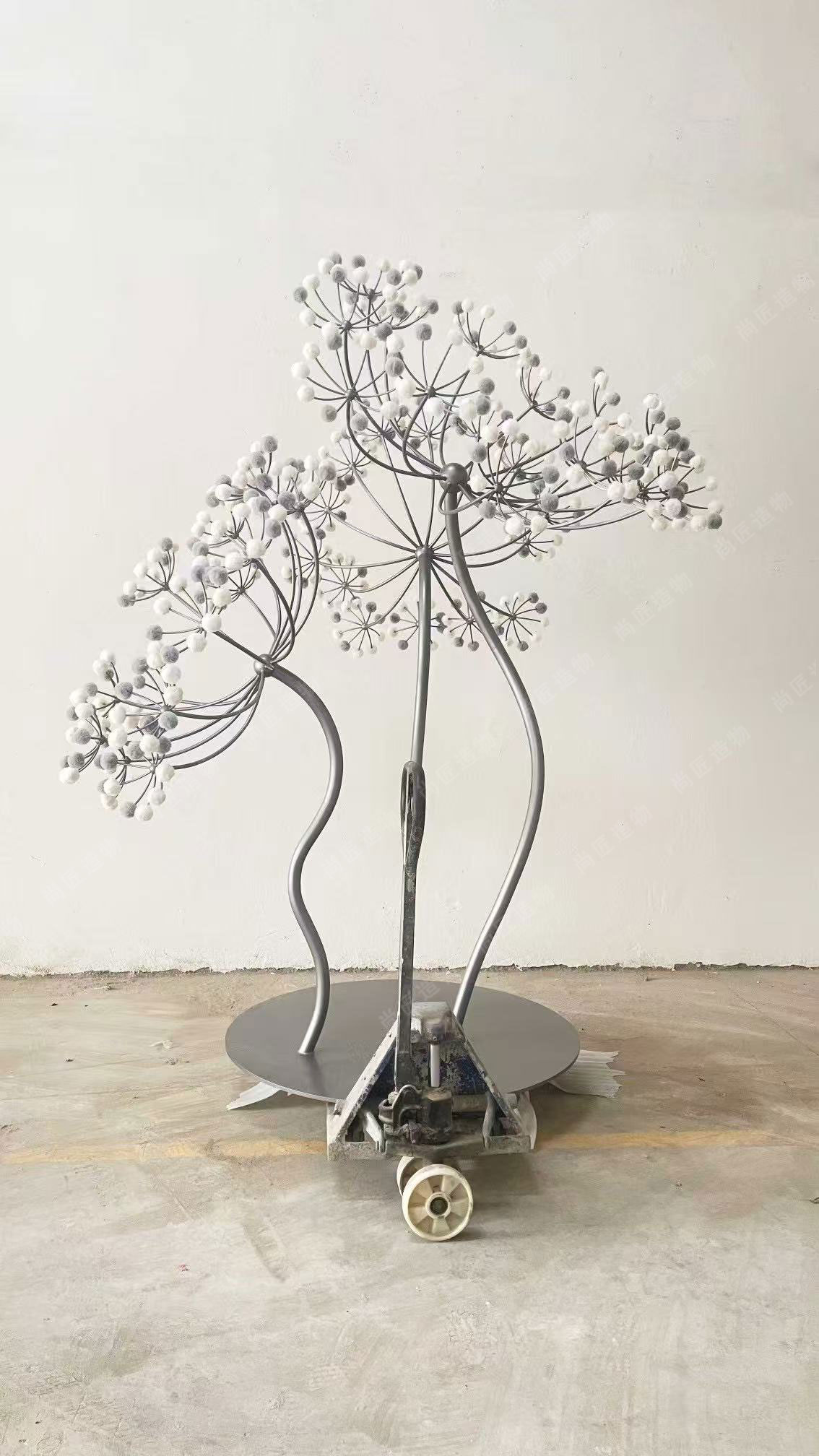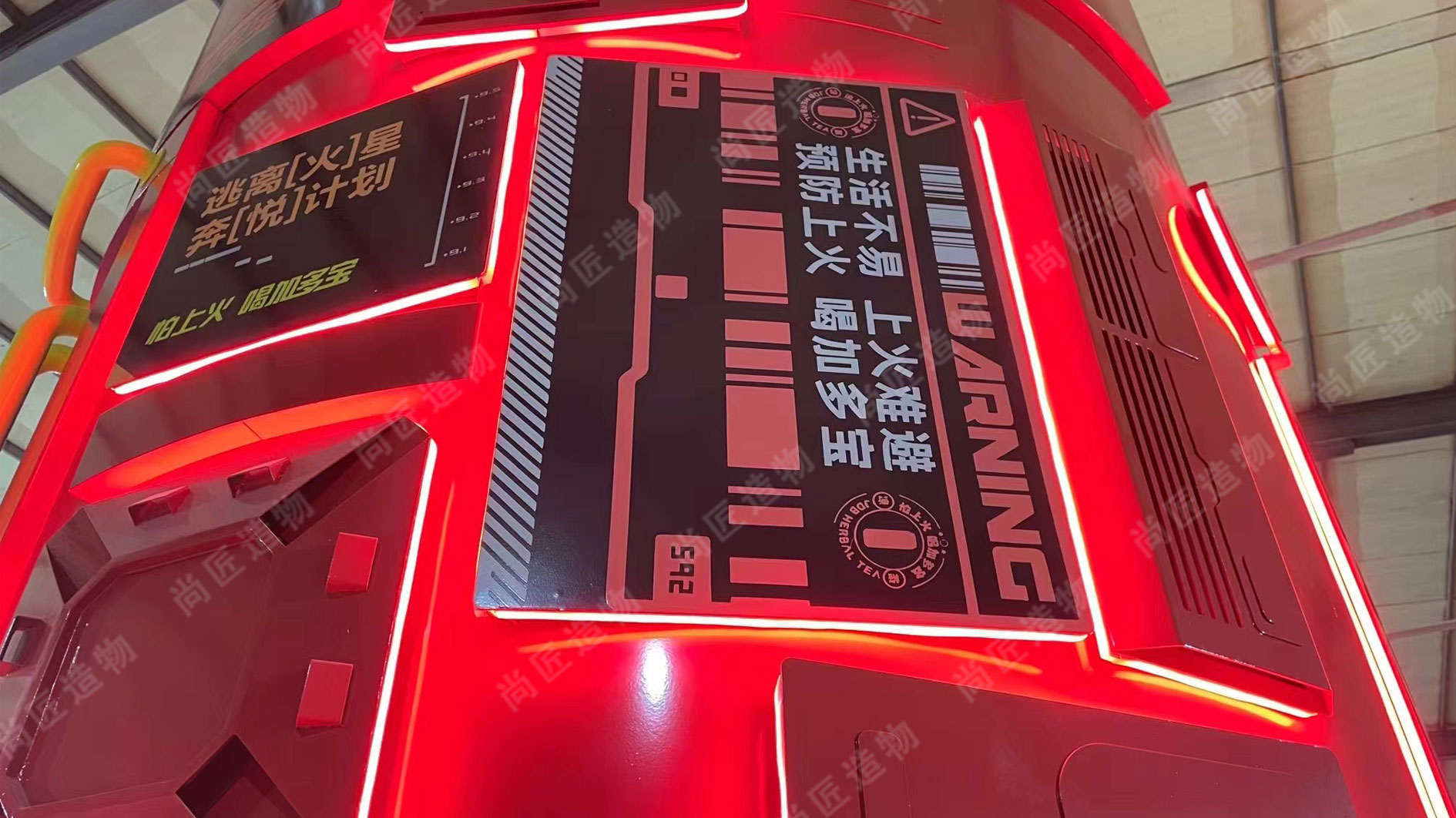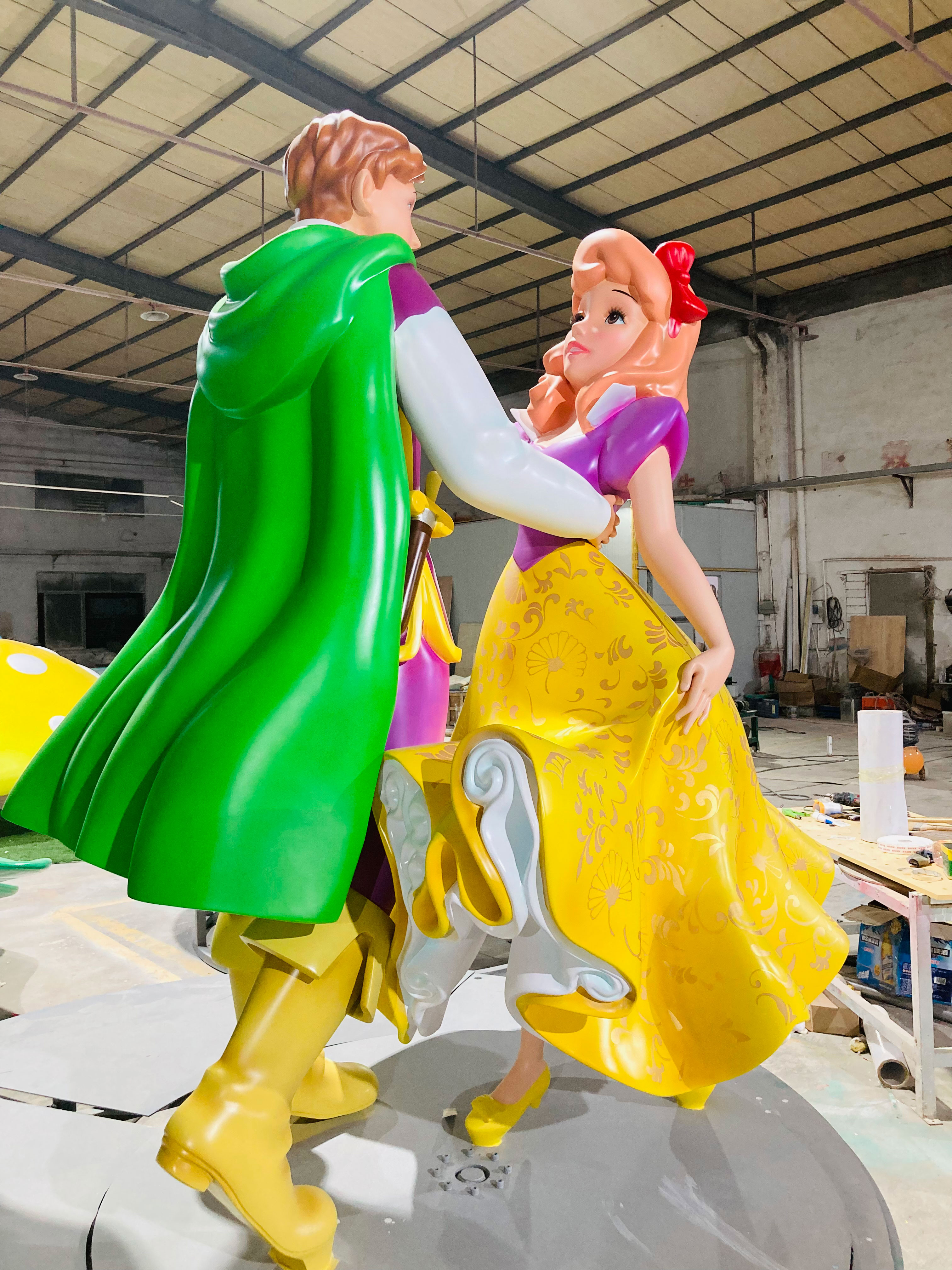Key Takeaways
Fiberglass sculpture merges artistic expression with structural resilience, making it a preferred medium for both indoor and outdoor installations. Its layered construction—fiber strands bonded with resin—provides exceptional strength while remaining lightweight, a combination rarely matched by traditional materials like stone or stainless steel sculpture. Below are critical insights for artists and enthusiasts:
| Feature | Advantage | Common Use Cases |
|---|---|---|
| Lightweight | Easy transportation and installation | Large public installations |
| Weather-resistant | Withstands UV, moisture, and temperature | Outdoor monuments, garden art |
| Customizable | Accepts paints, coatings, and textures | Themed sculptures, decor |
"Fiberglass allows artists to think bigger—literally. Its weight-to-strength ratio unlocks possibilities that heavier materials restrict." — Sculptor Mara Lin, 2022.
For those exploring materials, consider fiberglass’s adaptability: it can mimic metals, stone, or wood finishes while offering superior durability. A practical tip: apply UV-resistant sealants annually to outdoor pieces to prevent resin degradation. This medium’s versatility supports intricate designs, from abstract forms to hyper-realistic figures, ensuring it remains a staple in modern art and architectural projects.

Fiberglass Sculpture Benefits for Artists
Fiberglass offers artists a unique combination of flexibility and resilience, making it an increasingly popular medium for contemporary sculptors. Its lightweight properties allow creators to design large-scale installations without structural limitations, while its layered fiber-reinforced structure ensures durability in both indoor and outdoor settings. Unlike traditional materials like stone or bronze, fiberglass enables intricate detailing through mold-based techniques, reducing production time for complex forms. The material’s compatibility with epoxy resins and acrylic paints provides endless finishing options, from polished metallic effects to vibrant, weather-resistant coatings. For projects requiring dynamic movement, such as Kinetic sculpture, fiberglass’s strength-to-weight ratio proves indispensable. Additionally, its resistance to corrosion and UV degradation minimizes long-term maintenance, letting artists focus on creative expression rather than preservation. This adaptability extends to collaborative works, as modular fiberglass components can be easily transported and assembled on-site. By balancing artistic precision with industrial-grade performance, fiberglass empowers creators to push boundaries in public art, architectural features, and experimental installations.
Creating Lightweight Fiberglass Art Pieces
The process of crafting lightweight fiberglass sculptures begins with strategic material selection and precise layering techniques. Artists often start by building a rigid base structure using materials like foam or wire mesh, which provides shape without adding significant weight. Layers of fiberglass fabric are then saturated with polyester or epoxy resin, creating a composite material that hardens into a durable shell. This method allows for intricate detailing while maintaining a surprisingly low mass—a 6-foot sculpture can weigh as little as 15-20 pounds, compared to 200+ pounds for equivalent stone works.
Key to achieving optimal weight distribution is the controlled application of resin. Professionals recommend using rollers to remove air bubbles and excess material, ensuring uniform thickness across curved surfaces. Unlike traditional bronze casting or stone carving, fiberglass sculpture permits mid-process adjustments—artists can sand specific areas or add reinforcement ribs before final curing. The cured surface readily accepts paints, metallic coatings, or textured finishes, enabling artists to mimic heavier materials like weathered copper or carved granite while preserving the advantages of lightweight construction. This combination of adaptability and portability makes fiberglass particularly suitable for suspended installations or temporary exhibitions requiring frequent transportation.

Durable Outdoor Fiberglass Sculpture Techniques
Achieving durability in outdoor fiberglass sculptures requires precise material selection and construction methods. Artists begin by layering fiberglass mats with polyester or epoxy resin, ensuring even saturation to prevent weak spots. To enhance weather resistance, UV inhibitors are mixed into the resin, while gel coatings—applied as a final surface layer—shield against fading and moisture penetration. For structural integrity, frameworks often incorporate stainless steel armatures or marine-grade plywood cores, particularly in large installations exposed to wind loads.
Surface finishing plays a dual role: automotive-grade sealants create a waterproof barrier, and textured finishes like Cartoon sculpture designs utilize flexible acrylic paints to accommodate material expansion during temperature shifts. Drainage channels are strategically integrated into base designs to prevent water pooling, a common cause of long-term degradation. By balancing these techniques, fiberglass sculptures maintain their visual and structural qualities for decades, even in coastal or high-rainfall environments, reducing maintenance needs while preserving artistic details.

Fiberglass Resin vs Alternative Sculpture Materials
When selecting materials for sculpture creation, artists often weigh fiberglass resin against traditional alternatives like bronze, stone, or wood. Fiberglass composites excel in scenarios requiring intricate detailing and structural flexibility, offering a strength-to-weight ratio unmatched by heavier mediums. Unlike bronze, which demands costly casting processes and extensive labor, fiberglass allows for rapid prototyping and adjustments during fabrication. Stone sculptures, while timeless, face limitations in portability and susceptibility to weathering—issues mitigated by fiberglass’s inherent resistance to moisture, UV rays, and temperature fluctuations. Even wood, prized for its organic warmth, cannot compete with fiberglass’s longevity in outdoor settings, where insects and rot pose persistent threats.
Modern artists increasingly leverage fiberglass for realistic sculpture projects requiring precise replication of textures, from human features to natural landscapes. However, traditional materials retain value in contexts prioritizing historical authenticity or tactile depth. For instance, bronze remains favored for classical monuments, while stone’s geological uniqueness appeals to site-specific installations. The choice ultimately hinges on balancing artistic intent, environmental demands, and practical constraints, with fiberglass emerging as a versatile solution for contemporary creators seeking durability without compromising creative ambition.
Step-by-Step Fiberglass Sculpture Crafting Guide
Building upon the comparison of materials discussed earlier, fiberglass sculpture creation follows a structured process balancing technical precision and artistic vision. Artists begin by constructing a rigid armature using steel rods or wood, ensuring proportional accuracy for the intended design. A clay or foam prototype is then shaped over this framework, allowing for detailed adjustments before molding.
Next, a silicone or plaster mold captures the prototype’s contours, with seam lines carefully planned to simplify demolding. Layers of fiberglass matting saturated in polyester or epoxy resin are applied inside the mold, typically requiring 3-5 coats for structural integrity. Each layer is rolled to eliminate air bubbles—a critical step to prevent weak points in outdoor installations.
After curing (https://en.artmovr.com/), segmented molds may be used, requiring precise alignment during assembly.
Throughout the process, artists prioritize workspace ventilation and PPE usage due to resin fumes. This systematic approach ensures replicability for limited editions while retaining flexibility for hand-finished details, making fiberglass ideal for both monumental public art and intricate studio pieces.
Weather-Resistant Fiberglass Art Applications
Fiberglass sculptures excel in outdoor settings due to their unique resistance to environmental stressors. Unlike traditional materials like wood or stone, fiberglass does not warp, crack, or degrade when exposed to moisture, temperature fluctuations, or UV radiation. This makes it a preferred choice for public art installations, garden features, and architectural accents in coastal regions, urban centers, and high-traffic areas. Artists and designers leverage fiberglass’s adaptability to create large-scale sculptures for parks or corporate campuses, where durability and visual impact are equally critical.
The material’s lightweight nature simplifies installation and transportation, even for complex designs like kinetic wind sculptures or water-integrated fountain pieces. Commercial applications also benefit from fiberglass’s weatherproof qualities—theme parks, for instance, use it for long-lasting character statues, while municipalities commission corrosion-resistant memorials or wayfinding markers. By combining protective gel coats with UV-stable pigments, these artworks retain their color and structural integrity for decades, reducing maintenance costs compared to metal or concrete alternatives. This practicality, paired with artistic flexibility, positions fiberglass as a modern solution for bridging aesthetic vision with real-world environmental demands.
Innovative Fiberglass Sculpture Design Possibilities
Fiberglass’s adaptability unlocks groundbreaking opportunities for sculptors to push artistic boundaries. Unlike traditional materials constrained by weight or fragility, fiberglass permits experimentation with complex geometries, from sweeping curves to angular abstractions. Artists can layer resin-coated fibers to achieve intricate textures, mimic natural surfaces like stone or wood, or create translucent effects through strategic light placement. This versatility supports hybrid designs, such as combining rigid structural elements with fluid, organic shapes, enabling dynamic compositions that challenge conventional aesthetics.
Advances in mold-making techniques further expand creative potential. Multi-part molds allow for modular sculptures that can be reconfigured or scaled for site-specific installations. Embedded elements—like LED lighting systems or kinetic components—add interactive dimensions, transforming static pieces into evolving artworks. Environmental integration is also enhanced: fiberglass sculptures can be engineered to withstand wind loads, temperature shifts, and UV exposure without compromising detail. Emerging trends include eco-conscious designs using recycled fiberglass composites, aligning artistry with sustainability. By merging technical precision with imaginative vision, fiberglass continues to redefine what three-dimensional art can achieve in public spaces, galleries, and architectural settings.

Maintaining Long-Lasting Fiberglass Artworks
While fiberglass sculptures are inherently durable, proper care ensures their longevity and aesthetic appeal. Regular cleaning with mild soap and water removes dirt and environmental residues without damaging the resin surface. Avoid abrasive tools or harsh chemicals, which can scratch or degrade the protective gel coat. Inspect artworks annually for hairline cracks or discoloration, particularly in outdoor installations exposed to UV rays or temperature fluctuations. Minor repairs can be made using fiberglass patching kits, while larger issues may require professional restoration to preserve structural integrity.
Applying UV-resistant sealants every 2–3 years shields the surface from sun damage and maintains color vibrancy. For sculptures in high-traffic areas, consider repositioning them periodically to minimize uneven wear. Indoor pieces benefit from dusting with microfiber cloths and avoiding prolonged humidity, which can weaken adhesion between layers. By combining preventive measures with timely repairs, artists and collectors can extend the lifespan of fiberglass artworks, ensuring they remain visually striking for decades. This practice aligns with the material’s industrial-strength reputation while honoring the artist’s original vision.

Conclusion
Fiberglass sculpture represents a unique intersection of artistic vision and material innovation, offering solutions to challenges faced by traditional sculpting methods. As explored throughout this article, the blend of resin and fiber layers creates artworks that withstand environmental stresses while maintaining intricate details—a balance rarely achieved with stone, metal, or wood. This adaptability has expanded creative possibilities, enabling artists to experiment with bold forms and large-scale installations without compromising structural integrity.
The material’s lightweight nature simplifies transportation and installation, making it practical for public spaces, gardens, and architectural integrations. Furthermore, advancements in finishing techniques allow for textures and colors that mimic natural materials or embrace contemporary aesthetics. While fiberglass requires periodic maintenance to preserve its appearance, its resistance to corrosion, moisture, and UV damage ensures longevity unmatched by many alternatives.
By bridging artistry with industrial-grade durability, fiberglass continues to redefine modern sculpture, empowering creators to push boundaries while delivering works that endure both physically and visually. Its role in public art, commercial projects, and private collections underscores its growing significance in the evolving landscape of three-dimensional design.
FAQs
How does fiberglass compare to traditional sculpture materials like bronze or stone?
Fiberglass offers significant weight reduction, often weighing 60-70% less than bronze or stone, while maintaining comparable structural integrity. Unlike metals, it resists corrosion, and unlike stone, it won’t degrade from freeze-thaw cycles, making it preferable for dynamic or climate-sensitive installations.
Can fiberglass sculptures withstand extreme weather conditions?
Yes, the resin matrix in fiberglass creates a waterproof barrier, and UV-resistant coatings prevent fading or brittleness. Properly sealed sculptures endure temperatures from -40°F to 180°F, outperforming untreated wood or porous stone in humid or coastal environments.
What maintenance do fiberglass artworks require?
Annual cleaning with mild soap and water removes debris. Inspect for micro-cracks every 3-5 years, which can be repaired using epoxy filler. Wax polishing every 2-3 years preserves surface luster without the intensive upkeep demanded by patinated metals.
Are fiberglass sculptures customizable for complex designs?
The material’s liquid resin stage allows capturing intricate mold details as fine as 1/16th of an inch. Layering techniques enable hollow sections for internal lighting or mechanical components, supporting kinetic or interactive art features.
Is fiberglass environmentally stable for long-term displays?
Fiberglass doesn’t expand/contract significantly with temperature shifts, preventing stress fractures. Industrial-grade resins inhibit fungal growth and insect damage, ensuring stability in botanical gardens or public parks over decades.
How does cost factor into choosing fiberglass over metals?
While initial material costs are 20-30% lower than bronze, fiberglass’ real savings come from reduced shipping/installation expenses and minimal lifetime maintenance, making it cost-effective for large-scale or multi-unit projects.
 ch
ch English
English






